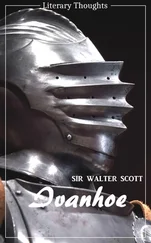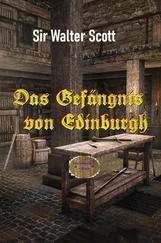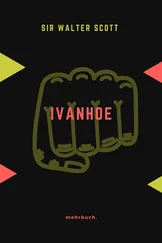Walter Scott - Ivanhoe
Здесь есть возможность читать онлайн «Walter Scott - Ivanhoe» — ознакомительный отрывок электронной книги совершенно бесплатно, а после прочтения отрывка купить полную версию. В некоторых случаях можно слушать аудио, скачать через торрент в формате fb2 и присутствует краткое содержание. Жанр: Исторические приключения, на английском языке. Описание произведения, (предисловие) а так же отзывы посетителей доступны на портале библиотеки ЛибКат.
- Название:Ivanhoe
- Автор:
- Жанр:
- Год:неизвестен
- ISBN:нет данных
- Рейтинг книги:4 / 5. Голосов: 1
-
Избранное:Добавить в избранное
- Отзывы:
-
Ваша оценка:
- 80
- 1
- 2
- 3
- 4
- 5
Ivanhoe: краткое содержание, описание и аннотация
Предлагаем к чтению аннотацию, описание, краткое содержание или предисловие (зависит от того, что написал сам автор книги «Ivanhoe»). Если вы не нашли необходимую информацию о книге — напишите в комментариях, мы постараемся отыскать её.
Ivanhoe — читать онлайн ознакомительный отрывок
Ниже представлен текст книги, разбитый по страницам. Система сохранения места последней прочитанной страницы, позволяет с удобством читать онлайн бесплатно книгу «Ivanhoe», без необходимости каждый раз заново искать на чём Вы остановились. Поставьте закладку, и сможете в любой момент перейти на страницу, на которой закончили чтение.
Интервал:
Закладка:
The ultimate issue of this affair does not appear; but as the house of Cassilis are still in possession of the greater part of the feus and leases which belonged to Crossraguel Abbey, it is probable the talons of the King of Carrick were strong enough, in those disorderly times, to retain the prey which they had so mercilessly fixed upon.
I may also add, that it appears by some papers in my possession that the officers or country keepers on the Border were accustomed to torment their prisoners by binding them to the iron bars of their chimneys to extort confession.
CHAPTER XXIII
1 (p. 221) epigraph: The lines are from Shakespeare’s Two Gentlemen of Verona (act 5, scene 4) .
2 (p. 227) the industrious Henry: See “Dedicatory Epistle,” endnote 7.
CHAPTER XXIV
1 (p. 229) epigraph: The text is from John Home’s Douglas (1756; line 305).
2 (p. 234) gentle Ecclesiastica: Bois-Guilbert here associates Rebecca with the Book of Wisdom from the Apochrypha, also called Ecclesiasticus, which contains lengthy disquisitions on female virtue and moral conduct.
CHAPTER XXV
1 (p. 239) epigraph: The lines are from Oliver Goldsmith’s She Stoops to Conquer (1773; 4.680).
CHAPTER XXVI
1 (p. 247) epigraph: The lines are written by Scott himself.
CHAPTER XXVII
1 (p. 254) epigraph: The lines are from George Crabbe’s “The Hall of Justice” (1807; lines 5-8, 27-32) .
2 (p. 269) touch not mine anointed, and do my prophets nought of evil: See the Bible, 1 Chronicles 16:22.
3 (p. 269) “They bring forward mantelets and pavisses”: [Author’s note] Mantelets and Pavisses. Mantelets were temporary and movable defences formed of planks, under cover of which the assailants advanced to the attack of fortified places of old. Pavisses were a species of large shields covering the whole person, employed on the same occasions.
4 (p. 270) “Look that the crossbowmen lack not bolts”: [Author’s note] Bolts and Shafts. The bolt was the arrow peculiarly fitted to the cross-bow, as that of the long-bow was called a shaft. Hence the English proverb—“I will either make a shaft or bolt of it,” signifying a determination to make one use or other of the thing spoken of.
CHAPTER XXVIII
1 (p. 271) epigraph: The lines are written by Scott himself.
2 (p. 281 ) Juvenal’s Tenth Satire: Better known to Scott’s readers in the form of Samuel Johnson’s imitation, “The Vanity of Human Wishes,” in which the rich traveler discovers that “Nor light nor darkness bring his pain relief / One shows the plunder, and one hides the thief” (lines 43-44).
3 (p. 283) “Here be two arblasts … with windlaces and quarrells”: [Author’s note] Arblast, etc. The arblast was a cross-bow, the wind-lace the machine used in bending that weapon, and the quarrell, so called from its square or diamond-shaped head, was the bolt adapted to it.
CHAPTER XXIX
1 (p. 284) epigraph: The lines are from Friedrich Schiller’s Die Jungfrau von Orleans (The Maid of Orleans; 1801; act 5, scene 11 ); the translation is by Scott.
2 (p. 286) The quiver … the shouting: The reference is to the Bible, Job 39:23-25.
3 (p. 287) “Something resembling a bar of iron, and a padlock painted blue on the black shield”: [Author’s note] Heraldry. The Author has been here upbraided with false heraldry, as having charged metal upon metal. It should be remembered, however, that heraldry had only its first rude origin during the crusades, and that all the minutiae of its fantastic science were the work of time, and introduced at a much later period. Those who think otherwise must suppose that the Goddess of Armoirers, like the Goddess of Arms, sprung into the world completely equipped in all the gaudy trappings of the department she presides over. In corroboration of what is above stated, it may be observed, that the arms which were assumed by Godfrey of Boulogne himself, after the conquest of Jerusalem, was a cross counter potent cantoned with four little crosses or upon a field azure, displaying thus metal upon metal. The heralds have tried to explain this undeniable fact in different modes; but Ferne gallantly contends that a prince of Godfrey’s qualities should not be bound by the ordinary rules. The Scottish Nisbet and the same Feme insist that the chiefs of the crusade must have assigned to Godfrey this extraordinary and unwonted coat-of-arms in order to induce those who should behold them to make inquiries; and hence give them the name of arma inquirenda. But with reverence to these grave authorities, it seems unlikely that the assembled princes of Europe should have adjudged to Godfrey a coat armorial so much contrary to the general rule, if such rule had then existed; at any rate, it proves that metal upon metal, now accounted a solecism in heraldry, was admitted in other cases similar to that in the text. See Ferne’s Blazon of Gentrie, p. 238; edition 1586. Nisbet’s Heraldry, vol. i. p. 113; second edition.
4 (p. 289) “close under the outer barrier of the barbican”: [Author’s note] Barriers. Every Gothic castle and city had, beyond the outer walls, a fortification composed of palisades, called the barriers, which were often the scene of severe skirmishes, as these must necessarily be carried before the walls themselves could be approached. Many of those valiant feats of arms which adorn the chivalrous pages of Froissart took place at the barriers of besieged places.
CHAPTER XXX
1 (p. 294) epigraph: The lines are written by Scott himself.
CHAPTER XXXI
1 (p. 303) epigraph: The lines are from Shakespeare’s Henry V (act 3, scene 1).
2 (p. 310) “… and instantly follow me”: [Author’s note] Incident from Grand Cyrus. The Author has some idea that this passage is imitated from the appearance of Philidaspes, before the divine Mandane, when the city of Babylon is on fire, and he proposes to carry her from the flames. But the theft, if there be one, would be rather too severely punished by the penance of searching for the original passage through the interminable volumes of the Grand Cyrus.
3 (pp. 314-315) Whet the bright steel … I also must perish: [Author’s note] Ulrica’s Death-Song. It will readily occur to the antiquary that these verses are intended to imitate the antique poetry of the Scalds—the minstrels of the old Scandinavians—the race, as the Laureate so happily terms them, “Stern to inflict, and stubborn to endure, / Who smiled in death.” The poetry of the Anglo-Saxons, after their civilisation and conversion, was of a different and softer character; but in the circumstances of Ulrica she may not be unnaturally supposed to return to the wild strains which animated her forefathers during the time of Paganism and untamed ferocity.
CHAPTER XXXII
1 (p. 316) epigraph: The lines were written by Scott himself; see chapter 18, note 1.
2 (p. 320) THEOW and ESNE … FOLKFREE and SACLESS: “Theow” and “Esne” refer to Gurth’s status as a serf, and “folkfree” and “sacless” to the freedom from serfdom now bestowed upon him by his master, Cedric. Scott borrowed the terms from a seventeenth-century text, Sir Henry Spelman’s Feuds and Tenures by Knightly Service (1641).
Читать дальшеИнтервал:
Закладка:
Похожие книги на «Ivanhoe»
Представляем Вашему вниманию похожие книги на «Ivanhoe» списком для выбора. Мы отобрали схожую по названию и смыслу литературу в надежде предоставить читателям больше вариантов отыскать новые, интересные, ещё непрочитанные произведения.
Обсуждение, отзывы о книге «Ivanhoe» и просто собственные мнения читателей. Оставьте ваши комментарии, напишите, что Вы думаете о произведении, его смысле или главных героях. Укажите что конкретно понравилось, а что нет, и почему Вы так считаете.








